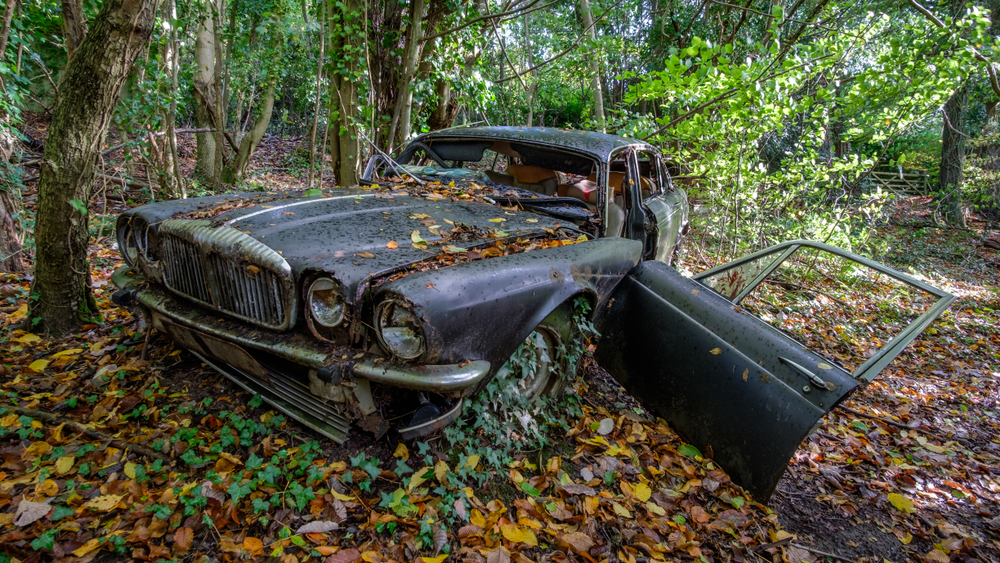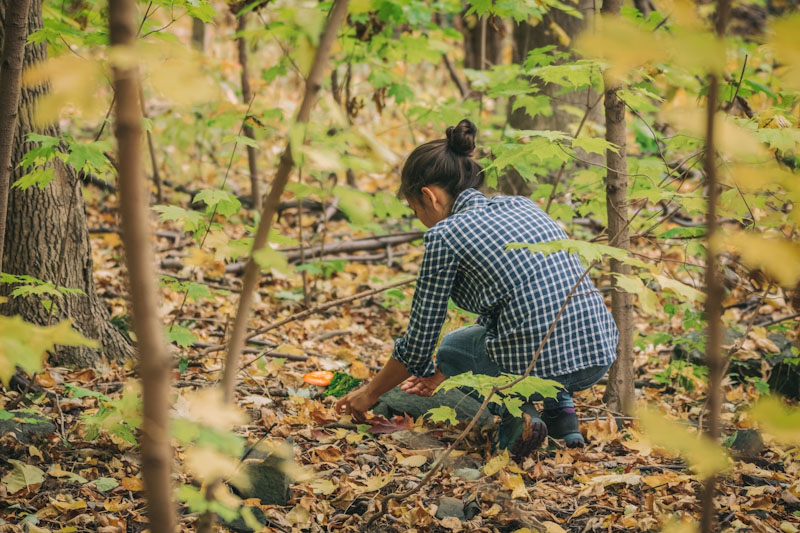In every apocalyptic movie, we see the camera panning over highways packed with cars that are now useless set decoration items due to the nature of the disaster. However, in the real world, those cars will prove quite useful for the smart survivalist, and most of them will be picked out clean by those desperate to survive.
If you find yourself alone in the middle of a highway packed with cars with nothing but a backpack with some food and water, how about checking those vehicles? Or perhaps your car breaks down in the middle of nowhere, and you decide to take parts of it with you. Do you know what you can salvage?
Since the world is full of cars, the likelihood of coming across more abandoned cars during a disaster is high, and cannibalizing them for valuable survival items is recommended.
Cars full of stuff
If you stop and think about your car right now, I bet there’s a lot of stuff in it that probably shouldn’t be there, or you just forgot to take it out of the car weeks or months ago.
For some folks, their car is a storage space for random stuff that accumulates over the years. But for you, a cluttered car is the Jackpot you’ve been waiting for in this post-apocalyptic world.
There could be all sorts of helpful stuff in the trunk, glove box, under the seats, or perhaps in the center console or the door pockets. All you have to do is check these parts of the car and see what you can score.
If you can get into the trunk, you might find tools, jumper cables, blankets, flares, tire irons, a flashlight or two, and even some extra clothes. Who knows what people have stored in their trunks. Most cars are equipped with a first aid kit which can come in handy, and if you’re lucky, you might even find some camping gear.
Moving to the glovebox and center console, chances are you may find napkins, lighters, a bottle or two of disinfectant, documents, and all sorts of papers you can use as kindling, and perhaps some snacks like protein bars or whatever. You can even find over-the-counter medicine or maybe some prescription drugs the car owner forgot about.
Maybe you’ll find a car that just came back from a Walmart run, and now you have to figure out if you stay by this car or if you take the stuff back to your camp. If you decide to carry some stuff back to camp, make sure you protect the things you leave behind from hungry animals and other people. Mark the car and hide the supplies wherever you can if the trunk cannot be locked.
Fuel
After a civilization collapse event, most cars will be abandoned as they run out of fuel. However, you shouldn’t assume that’s the case for all vehicles since some vehicles may have broken down due to various reasons, while others were just parked before the brown stuff hit the fan.
Unless the cars have a siphon prevention system, you shouldn’t have any problem siphoning some fuel. Give the rear of the car a push and listen carefully if fluid is sloshing inside. If it does, Jackpot!
Now all you need is a simple length of hose, and I hope that the car doesn’t have the siphon prevention system I’ve mentioned before. If it does, look for other vehicles and avoid puncturing the gas tank to drain the fuel since even the smallest of sparks could start a fire, and you may end up injuring yourself.
Battery
The battery is a valuable item to have in your shelter since it can be used to power a light, or you can make sparks using a jumper cable to start a fire. Some savvy folks can even rig a solar panel and keep it charged for a long time.
The problem with the battery is that carrying it back to camp is no easy task since it weighs about 40 pounds. Even more, after struggling to take it back to your shelter, you may realize it’s dead since it sat around for a long time.
Wiring
Every car has a lot of wiring, and long strands of wires can be salvaged from just one vehicle. You can use wires to make animal snares and traps, or you can use them for tying down stuff or building structures in your shelter. Pieces of wiring can be used for sewing, or you can even improvise fishing hooks if you’ve got the correct type of wire. And lastly, you can use the salvaged wires for all your electrical projects.
However, when scavenging wires, you should avoid electric or hybrid cars because anything of electrical nature in such vehicles may carry a potentially fatal charge.
Seat belts
Seat belts are ideal for making straps for clothes, backpacks, and pretty much anything you need. The robust material used to make seat belts makes them suitable for securing loads or improvising a stretcher. To get the seatbelts, pull them out as much as possible and cut them at the base.
And once you get the seatbelts, don’t forget to look for cargo nets in the vehicle’s rear. Most modern SUVs and trucks have these cargo nets in the back and are often used to secure groceries or other loads.
You could use these nets to improvise a backpack or as a fishing net. In some cases, the holes will not be small enough to trap fish, but you can use some of that salvaged wiring to make the holes smaller. It may take some time, but it will be worth it.
Mirrors
Most folks will get the mirrors thinking they can use them to start a fire, but the mirrors designed for cars are useless for such tasks since they are convex to allow a field of view as wide as possible. To start a fire, you would need a concave mirror that directs light to a point.
Even so, you can still get the mirrors and use them for other purposes such as signaling or all your grooming tasks. You can place them inside your shelter to reflect light from small light sources, or you can use them to make a reflective trail around camp.
Headlights and light lenses
Shards of lenses from the headlights can be used as an improvised knife, or you can use them to make traps or improvise all sorts of perimeter defense items using those sharp pieces. You can even use a piece of the clear lens as a magnifying glass to ignite some tinder. And the whole lens may be used as a drinking vessel.
If you plan to do some night hunting where low light is needed to avoid spooking the prey, you can use a piece from a brake light lens as a filter for your flashlight. You will be able to improvise a red light and increase your visibility at night while staying somehow undetected.
Hubcaps
Some older cars have removable metal hubcaps, compared to newer models, which have plastic ones. The metal hubcaps can be used as bowls or cooking pans. You can clean a dish-shaped hubcap and turn it into a reliable skillet in no time.
Upholstery
There is a lot of upholstery in pretty much every car these days, and it may come in handy for your survival needs. You can get large upholstery pieces, and you could fashion them into shoes, leggings, and whatever else you might need. You can even improvise a backpack to carry the items you scavenged.
The upholstery and the foam inside the seats, and the large bench can be used to fashion a pillow or a mattress to make your shelter more comfortable. You can also use the foam and pieces of upholstery to make padding for your improvised backpack or your clothes. These materials can also be used as insulation for your shelter to protect you from the elements.
The headliners are usually made from a large piece of material, and if you manage to cut it or tear it out, you can use it for various purposes. You can use it to fashion clothes, you can use it as a ground cover in your shelter or when making traps, or use it for roofing. The same goes for the carpet, and you are limited only by your imagination when trying to find a use for it.
As for the rubber mats, you can use these to improvise funnels to collect rainwater, you can use them to make sandals, or you can use them to insulate your shelter.
Tires
The tires aren’t of much use unless you have some proper cutting tools. If that’s the case, you can use the tires to make soles for your sandals, or you can cut them into various pieces and make roof shingles for your shelter. Use some of that salvaged wire to sew rubber pieces together, and you can make a ground cover or floor mat.
Whatever you do, don’t burn the tires since the black smoke coming from burned tires is highly toxic, and there are other, safer ways to create a smoke signal.
Body parts
The body parts of the average vehicle can be salvaged, but due to their heavy and construction nature, you will need some excellent tools to undo bolts or cut connecting parts. If you have the tools and time to work on the body panels, you could quickly turn the hood, trunk, and windows into panels for your shelter.
You can even improvise a sled using the hood and the seatbelts as straps and use it to haul the resources you find. In case needed, you can even improvise a stretcher from the hood.
Tools you may need
If you want to get as many resources as possible from a vehicle, you will need some tools. The following tools will help you salvage items from various cars, and it pays to carry them with you.
Wrenches
You can bring along a set of wrenches to cover all sizes, or you can bring an adjustable crescent wrench. Both will do a good job, but the adjustable crescent wrench will take longer to complete a task.
Screwdrivers and pry bars
A pry bar can help you open pretty much anything using brute force. You can even use it for smashing the windows if you’re in a hurry or for popping the trunk. However, screwdrivers will help you with the more delicate tasks of preserving and salvaging items without damaging them. You can use them to remove screws from headlights and taillights and from pretty much everywhere. And in some cases, you can even use the screwdrivers to pry up things.
Wire cutters and tin snips
A pair of wire cutters will help you salvage the wiring from the car, and even the most straightforward pair of wire cutters you have in your home will cut through any size of wire used in today’s cars. On the other hand, a tin snip will help cut through metal, and you will be able to use it to improvise various items from sheet metal.
Hose
You will need a decent length of hose to siphon fuel from abandoned vehicles. Make sure the hose you pick is small enough to pass the gate under the filler cap. Also, the hose should be long enough to reach the bottom of the gas tank and touch the ground to keep the flow going as you start siphoning the fuel.
Concluding
Scavenging items from cars is not complicated if you have the right mindset and the proper tools for the job. However, it would help ensure the vehicle is abandoned and that no other parties are interested in it. Even in a survival situation, taking something that isn’t yours can have dire consequences.
If there’s no one in sight and the abandoned vehicles are yours for the taking, you can get to work and take whatever you need. The things you can find in a car are as varied as your level of necessity, and the more time you spend investigating a vehicle, the more you increase your chances of hitting the Jackpot.










Larry Schlesinger | November 4, 2021
|
You failed to mention salvaging the lamps (interior and exterior brake, signal and headlamps) as well as, the alternator and belts to go along with that battery you’re lugging back to camp. A simple water wheel can be made by stacking the metal wheels that the tires were mounted on, overlapping them in a circle and wiring them (or bolting them if you have a drill and some bolts) together to form “paddles”. If you have running water near by, this crude water wheel can be placed in the stream to turn the alternator with the salvaged belt and run the lights, as well as charge the battery (or batteries, if you salvage from more that one car). Running the electricity from the stream site to your camp (or cave) is where the wiring harness wires comes in handy. The alternator could also be fixed on a pole with the radiator fan blade mounted on it’s shaft to make a crude wind generator. It could even run the car radio in your shelter, giving you an electronic “ear” on what is going on in the outside world. Having a source of power could charge that laptop or phone into which you downloaded all that useful survival info into before the SHTF event. The hoses from the engine and AC/Cooling system could also be useful for multiple tasks of transferring liquids, with the exception of transferring drinking water. Antifreeze, even in small quantities, can be deadly. The window washer water tank can be salvaged, once its rinsed completely, to store water or other liquids. Seats can be removed and used as beds or just comfortable chairs in your shelter. The radiator, can be placed in the sun, under some of the salvaged window glass, to make a solar water heater for showering. And the oil in the oil pan can be useful in many ways to lubricate any mechanical project you dream up.
William Halford | November 4, 2021
|
The problem with using the alternator as a power supply is being able to turn it fast enough, as most alternators are barely putting out when the engine is idling, and it’s even less output at idle for an alternator on an older engine. Using the radiator fan, wind power isn’t likely to be enough unless it’s a lot of wind (way more wind speed than normal), and then you have the problem of having to support it well enough to withstand the wind speed needed. And if you add more load to the alternator, and it would be harder to turn, making the wind push the blades harder and putting more force on whatever is supporting the alternator. And the radiator fan isn’t likely to produce enough torque to turn an alternator with much of a load on it.
And the alternator would have to be above the trees to have a chance at getting enough wind. If the trees are tall, old pines, for example, how is a person going to get the alternator up that high? It’s not likely to happen. Or with no trees, on top of a hill. But that may not be an ideal spot for a shelter, requiring a log run of wire. Low voltage DC doesn’t do well at longer distances, and that’s assuming the person has enough wire to start with.
Water power might be more viable, assuming no drought. Much of the western USA is low on water due to drought, and it’s bad enough that even coal fired power plants scheduled to be permanently shut down soon were very much critical generation resources the past two summers. I know this because up until recently, I worked at one of them as an ICE (Instrumentation/Controls/Electrician) Journeyman. We were selling power at very high prices partly because of that. But finding an ideal water source, with enough flow and ideal water wheel mounting, would be difficult. Even more so in a desert.
Zulu 3-6 | November 5, 2021
|
A caution for folks using a red filter on their flashlights/headlamps. If you are hiding from an enemy who has, or may have, night vision gear, bear in mind that the red filter will do nothing to hide your light from them. Might as well use the white light. The only thing that works is total light discipline at night. My old unit used this knowledge frequently when we were OpFor against officer candidate classes. We would have to attack their camp at night, but we had to find it first. All we did was wait until they should have set up their patrol base, then wait until just after nightfall and watch for the light show through our NODS. Bingo. One located patrol base. An hour or so later, one eliminated patrol base. The instructors knew what we were doing, but made the candidates learn the hard, and most effective, way. To really rub salt in the wound, they were Army, we were Air National Guard security police.
Kfilly | November 5, 2021
|
I definitely agree. The only way I would use a light at night (it would still be a red one) is if I attached it to a walking stick and held the light close to the ground. I would use hold the light just about a foot off the ground to illuminate where I am stepping. I know that is still visible, but it is better than nothing for those who do not have NV.
Zulu 3-6 | November 5, 2021
|
Kfilly,
In a heavily wooded area, you might get away with that. It is when people start waving their red-lensed lights around that it looks like a laser light show. I did observe that red lights kept low, and inside tents, were hard to see with NODS unless the NOD wearing person was fairly close.
Between Three Centuries | November 5, 2021
|
Salvage the blasting caps out of the airbags. Use road flares to make explosives. Salvage magnesium wheels to make thermite. Use the sulfuric acid and lead from the batteries to make explosives and bullets. Use cotton and aspirin from medical kits to make gunpowder and explosives.
Illini Warrior | November 5, 2021
|
punching gas tanks these days is a mixed deal – some are poly instead of steel >>> setting up a salvage kit with a brass punch 12″-18″ long, hard plastic mallet and a few shallow low profile oil change pans will take care of most vehicles ….
I’d include collecting the lub oil and the transmission fluid for various uses including a heavy wick torch like a tiki pot – eazy enough to DIY a whole set of crude lighting system ….
bestjeepguide | December 9, 2021
|
Nice blog and the details about it really interesting.I liked your blog.